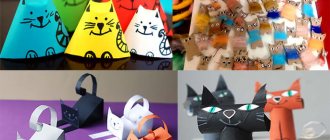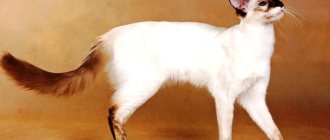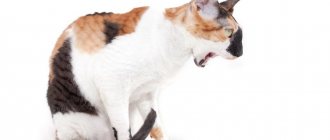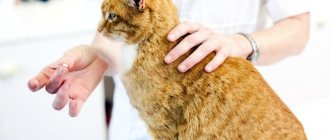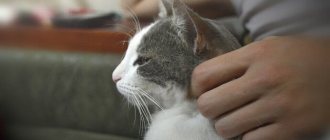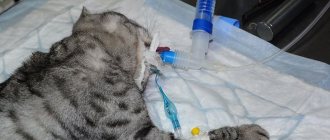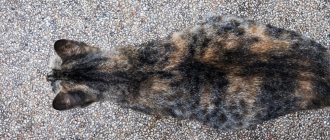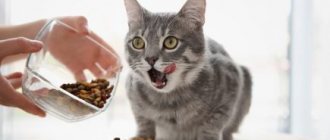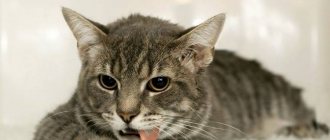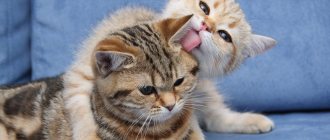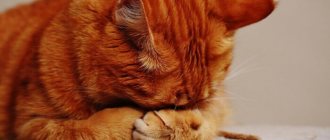Are you wondering how to draw a cat correctly? Then this article is just for you. Drawing animals is not an easy task, but the process can be very fun. In this lesson I will show you how to draw a cat so that even in sketch form it looks realistic. I'll take you through the steps of observation and quick sketches, leading you to an understanding of the animal's anatomy and helping you apply the finishing touches to make your cat truly come to life. If you want even more drawing tips and tricks, check out How to Draw Animals.
Many artists mistakenly believe that since animals are so mobile and often very fluffy, then no one will notice minor anatomical flaws and construction errors. I am sure that in order to draw any animal, you need to have a strong knowledge and understanding of how its body works under the fur. With that in mind, let's take a look at the steps you'll have to go through to learn how to draw cats and cats that look lifelike.
Start with quick sketches
Sketch some poses based on references. Don't pay too much attention to the clarity and precision of the lines now, try to capture the very essence of the movement. These initial, rough sketches will help you understand the cat's structure; Remember: we learn faster by drawing than by just watching.
To get the most out of this exercise, you can go further and try to slightly exaggerate the cat's flexibility, as they do in cartoons. This deliberate exaggeration will help you better understand how the animal moves and how its body works.
Basic drawing rules
To understand how to draw a cat easily, it is advisable to adhere to several rules:
- The basis of most sketches consists of geometric shapes. In order for them to turn out even, it is advisable to carry them out strictly according to the cells, it is advisable to practice before starting the drawing.
- It is necessary to explain to the child that the animal’s head should be smaller than the body, and the paws should be smaller than the tail.
- It is advisable to start depicting any animal from above.
Draw the skeleton
Correct construction begins with drawing the cat's skeleton. You can, of course, find many images on the Internet with anatomically correct skeletons of cats, but they will contain much more information than you actually need. Just observe the relationship between the sizes of the skull, chest and pelvis, as well as the distances between them. Also pay attention to how many joints there are in the cat's front and back legs, and which way they bend. Notice that the bone called the tarsus in a cat's hind leg extends backwards and is what gives the appearance of that part of the paw.
Having studied the correct anatomical structure of a cat's skeleton, draw a simplified version of it. If you are working in a graphics editor, create a separate layer for the skeleton. If you draw with a pencil on paper, then only lightly outline the construction lines so that they are not noticeable in the final version of the drawing and so that you can easily erase them later.
Anatomy of big cats
This tutorial is about the differences between members of the big cat subfamily. If you want to learn about felines in general, I advise you to read my first tutorial dedicated to them.
Step 1
The structure of all big cats is similar, so there is no need to memorize the muscles of each of them. Just look at the diagram of a lion's muscles - in other cats, some will be larger, others shorter, but the general structure will be the same.
Step 2
If you need to draw a big cat quickly without focusing on the musculature, here is a simplified diagram of the body. It will be a good idea if you always start there and then draw in the muscles if necessary.
Step 3
The same goes for bones. I have never memorized the structure of the skeleton - you can make a simplified diagram from it, and I suggest you use this diagram for all cats. The poses presented here are not distinctive for any particular member of the family - I simply made them similar for ease of comparison.
Add muscle
The next step is to build muscle on the cat's skeleton. As before, I do not propose to draw every muscle with anatomical accuracy, no, at this stage it is much more important to grasp the overall shape of the animal’s body and its proportions.
Use broad strokes to outline the paws and be sure to pay attention to the proper shape of the lines around the joints. Make sure the outline looks complete and precise, avoiding jagged or unclear lines. And remember that cats are actually very muscular and strong, despite all their fluffiness.
How to convey movement in a drawing
Such drawings have an increased level of complexity and require knowledge of the basics of composition.
- First you need to determine the position of the picture on the selected paper format and mark its contours, for example, with an oval.
- Schematically depict the figure of a cat using simple figures, draw a plane on which the cat stands.
- Check the proportions; this usually requires auxiliary lines. It is useful to study the structure of a cat's skeleton to better understand how the animal moves.
- Draw the skeleton with light lines. Mark the shadow areas and highlight the volumetric parts of the picture.
- Add as many details as possible, draw the fur. It turns out to be a walking cat.
Pay attention to weight distribution
Since we are drawing a cat in motion, each paw performs its own function and each has its share of the weight. The back left and front right paws carry the main part of it, they help the animal maintain balance. The other two paws are more relaxed.
The front left paw - although the animal still rests lightly on it - reaches forward to take another step. The back right one completes the previous one and is about to completely leave the ground. Attention to details like these will make your drawing truly come to life.
Draw a face
Drawing a cat's face in proportion is really important. Pay enough attention to the size relationship between the ears, eyes, nose and mouth - otherwise the temptation to fall into stereotypes and give your cat a big nose, huge eyes and cute little ears will be too great.
Ear size may vary depending on the breed. In our case, the ears are slightly larger than you might imagine, so be sure to balance their size with the size of the rest of the head. Also pay attention to how the head connects to the neck and how the neck meets the chest.
Figure
At this stage, the head of a cat is depicted. To do this, two axes are drawn, dividing the silhouette of the head horizontally and located vertically. This is necessary for the parallel arrangement of the furry's eyes, nose, and ears. Next, the head is adjusted, the shape of the tail is selected and the paws are added.
Draw the features of the muzzle
Now is the time to resort to thicker, darker and more defined lines. If you are working traditionally, just take a thick pencil and apply more pressure. If you prefer graphic editors, then switch to a new layer, while setting the opacity level for the previous ones to a low level.
Draw the eyes, mouth and nose (and notice how much it resembles the letter “T”), draw the pupils. If you wish, you can draw the eyes more squinted or more open. Don't forget about your mustache - it plays an important role!
Add wool
Now that everything is in order with the anatomy, all you have to do is add a layer of skin and fur and draw the head more clearly. Don't forget that, with the exception of some breeds, most cats are completely covered with hair.
Its density usually depends on the part of the body it covers: it is short on the head, muzzle and legs and becomes thicker and longer on the body, especially on the belly and tail. To show texture, use short, light strokes.
Notice what happens to the animal's skin depending on its posture: in this case, the skin on the front left and back right paws stretches, while behind the front right paw it gathers in folds.
Sitting cat in five steps
To draw such a cat you need to start from the head.
- It is necessary to draw a circle - the kitten's head. You need to finish drawing the ears on the head.
- Then you need to finish drawing the body. Draw an oval under the head, and another circle under it. The lines need to be connected to each other.
- Then use lines to depict the cat’s paws.
- Inside the oval head you need to depict the animal’s muzzle.
- Add a large voluminous tail to the body. The drawing is ready!
Add the finishing touches
If the cat you are drawing has any markings on its fur, draw them over the top. Erase all noticeable construction lines (if you draw with a pencil) or turn off the sketch layers in a graphics editor.
I decided to paint stripes on my cat. Be careful how dark you make the markings and stripes on the coat, as they can easily steal the spotlight. Use fine shading and follow the shape of the animal's body. Wool patterns, especially stripes, can add depth and dimension to your work, or make it look flat if you draw them incorrectly.
Experiment with the length, width and shape of the stripes - they are usually darker and more frequent on the tail, body and front legs, and thinner and lighter on the hind legs and around the head. Last but not least, add a light shadow under your cat's paws to indicate the ground, and you're done!
Author: Kate Oleska
Head
Some simple recommendations will help you draw a portrait of a cat correctly. The ears and eyes of animals are at the same level and are located symmetrically. Therefore, in order to place them correctly, a horizontal axis is drawn. A cat's ear is slightly curved on the outside. A rare bush of long hair grows in the ears. All this also needs to be displayed for the portrait to be realistic.
The cat's eyes are depicted as round, with a small triangle added inside. During daylight hours, the cat’s pupils are thin, and in sunlight they look like a vertical thread, but in the dark the pupil dilates and becomes round. This is a very interesting feature of feline representatives.
The nose is drawn from a triangle, dividing it in half with a vertical line, not forgetting to add the nostrils. In addition, it is advisable to draw “highlights” in the eyes. Thanks to this artistic technique, the cat will look like a real one.
Next you need to draw an oval and divide it into two axes. One will be horizontal and the other will be vertical. It is advisable to designate them in different colors. For example, the vertical axis will be black and the horizontal axis will be red.
The upper horizontal line of the circle needs to be divided into three more identical parts, marking them with a gray and blue pencil. The lower half is also divided into two parts and is marked with a green tint. The eyes are marked on the red line, and the cat's nose is marked on the green axis.
You should start sketching the ear on the blue axis, and finish on the gray axis. It is important to maintain the correct proportions when sketching the ears in relation to the head and eye level. Next, the oval of the head is corrected, the shape of the nose and eyes is corrected, and a muzzle is drawn.
Using pencil strokes, you need to apply the animal's fur, antennae and hairy bush on the inside of the ear. By gently pressing the pencil, reliefs are created around the nose and above the eyes.
